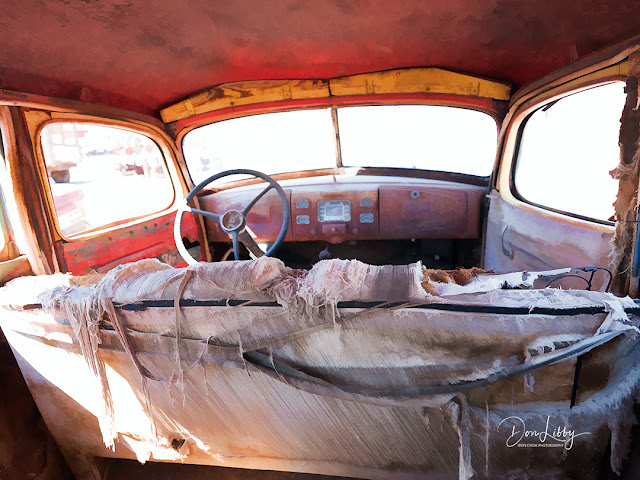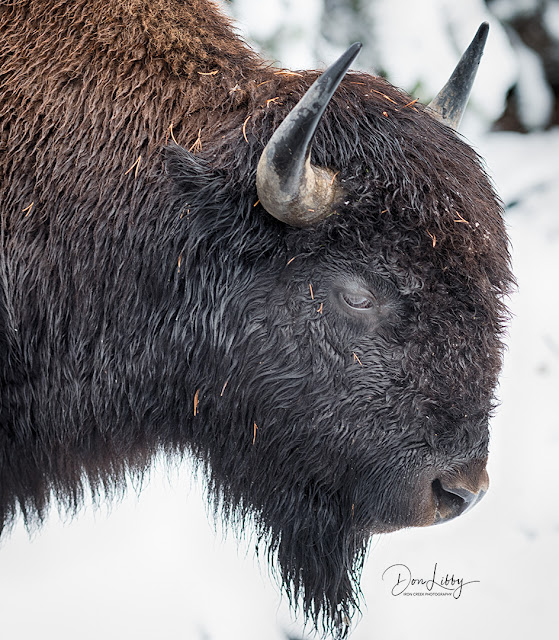It’s the first of November as I sit and write this and I’ve
had the GFX 50s for 8-months. During
this period I’ve brought, used and still own the following lenses. The GF23,
GF32-64, GF63, and the GF120 Macro. I
have also used and still own an older Mamiya 200 APO using a Fotodiox adaptor
and a Vivitar MC 2x tele
converter I picked up off E-bay.
GF63mm f/2.8 1/200 ISO 100
GF63mm 1/10 ISO 100
GF63mm f/4 1/10 ISO 100
I’ve used the combination of lenses to capture small bugs,
landscape, nature and wildlife. The
camera has been used in wet conditions with rain, snow and very cold as well as
hot, humid, windy, blowing sand. I can’t forget that I’ve used this in dark
environments such as interiors and shooting outside capturing lightning. I haven't had any problems or concerns
with the GFX or lenses the entire 8-month period. Except for the stupid
strap design; no matter the strap I
place on the GFX it always ends up in a knot.
GF 120mm f/8 1/4000 ISO 1600
shot handheld
Mamiya APO 200mm with 2x converter
1/3200 ISO 1600 cropped to taste
shot handheld
Processing the files from the GFX can be challenging. I have settled into making a choice of either
processing in Adobe Bridge then Photoshop CC or taking the much longer
way of converting the files using a combination of Adobe DNG Converter and Exif
Pilot so I can open and process in Capture One 10. I’ve found the circumstances of the shoot
dictate which method of processing I use.
Normal landscape and some wildlife and I’ll use a straight Bridge,
Photoshop method. If I’m shooting in a
darker environment I might be more apt to use a longer method of
conversion to use Capture One.
GF 23mm f/8 1/640 ISO 100
The following image was captured by leaning into the rear
window holding the camera in one hand and using the shutter button with the other
hand. Think of standing on your head
while juggling and attempting to do anything else. Not easy however the lightweight of the GFX
helped.
GF23mm f/4 1/160 ISO 800
shot handheld
I’ve been doing this long enough to understand that there
simply isn’t a 100% perfect system. That
said, if Fuji fixes the issue of the strap connection and somehow work out
the differences between Phase One and themselves so that Capture One can be
used (without the added steps) then we’d be seeing as close as possible to a perfect system.
Mamiya APO 200 with 2x converter
1/320 ISO 100
shot handheld
GF32-64 at 64mm
f/4.5 1/320 ISO 100
Auto focus as well as manual focus has been no problem using
this system. The ability to use the
toggle switch to move focus points have proved
to be a great tool shooting in either auto or manual focus.. The dynamic range of
the GFX is outstanding and constantly surprises me.
The following are examples of how well the Mamiya APO 200mm
works with the GFX. These were captured using manual focus and a combination of with and without the 2x converter.
Mamiya APO 200mm with 2x converter
1/1250 ISO 125
Mamiya APO 200mm with 2x converter
1/1600 ISO 125
Mamiya APO 200mm
1/250 ISO 100
Mamiya APO 200mm
1/640 ISO 320
cropped to taste
Mamiya APO 200mm
1/320 ISO 1250
Mamiya APO 200mm
1/250 ISO 1600
Remember, the previous 6-images were all captured using
manual focus. The last 3-images were all
also captured using a burst mode as the subject matter was not standing still.
My wish list for improvements is simple. I want a longer lens and am eagerly awaiting
the release of the 250 and converter next year. Change the strap
attachment. While I can continue to
process files as I have been I’d like to see the ability to use Capture One as
it is intended to be used; and yes I understand that Fuji may not have any say
in the issue. That’s my “instant” wish
list. I’d also welcome a full frame
sensor and as nice as the 50s is I wouldn’t mind seeing a 100 megapixel.
GF23mm f/8 1/125 ISO 200
cropped to taste
shot handheld
GF23mm f/8 1/400 ISO 100
used a wine country filter system for capture
How does the GFX 50s compare to my Phase One XF,
100-megapixel IQ1-100? We’re talking a
difference between a mirrorless (GFX) and DSLR (XF) type of systems. There is also a difference between the
full-sensor IQ1-100 and the crop-sensor of the GFX (80%). The easiest way to interpret the difference
is that if I were using a 200 mm lens on each, the lens would be a “true” 200mm
on the XF and 160mm on the GFX.
Shot the interior of this bar by holding the camera above my
head while poking through a broken window.
The ability to move the rear LCD helped me knowing what I was shooting.
GF 23mm f/4 1/125 ISO 400
shot handheld
So how well do I like the Fujifilm GFX 50s? If anyone had said I’d be doing this a year
ago I’d laugh and walk away.
However, things change. The Phase
One system as good as it is comes with a huge weight difference. Mount a 40-80 lens (same focal length as the
GF32-64) on a Phase One XF and add the digital back and you reach very close to
8-pounds compared to 4.4 pounds of the GFX 50s and 32-64.
GF 23mm f/4 1/250 ISO 100
I recently shot the interior of Murphy’s Gun Shop in Tucson
using the GFX and the GF23mm. All images
were shot on tripod and at an ISO of 125.
GF23mm f/8 0.8 ISO 125
GF23mm f/32 f/8 ISO 125
processed entirely in Capture One 10
Yes, there is a difference of having a full-frame
100-megapixel (or less depending on the digital back) versus the crop-sensor of
the GFX. There’s also the difference of
being able to capture wildlife using a burst mode of the GFX compared to a much
slower rate of capture with the XF. You
need to understand the tradeoffs of each system and make your own decision. In the end I have. As of this blog I have made the decision to
sell my complete Phase One system and continue using just the Fujifilm GFX 50s.
While I’ve sold my Phase One I have no problem in
recommending Phase One or my good friend Dave Gallagher at CaptureIntegration. While sadly you can’t
purchase a Fujifilm GFX 50s from Dave, you can however from another good
friend, Anthony Festa at Fotocare.
Thank you as always for allowing me to share my
experiences.
Don






















